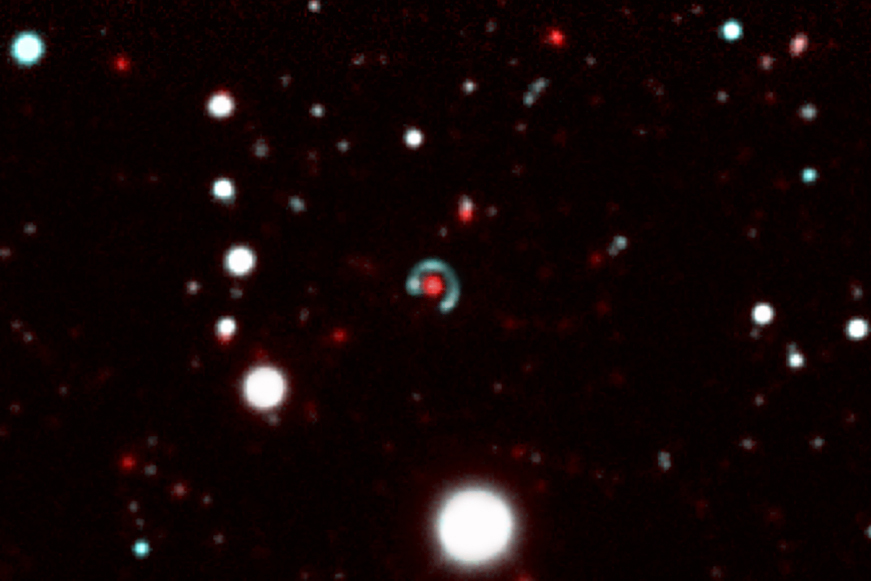First predicted by Einstein’s theory of General Relativity, an “Einstein Ring” is a rarely observed, but incredibly interesting astronomical phenomenon that occurs when two distant galaxies are perfectly aligned, millions of light years apart. The light from the more distant “source” galaxy becomes bent and distorted as it passes through the gravitational field caused by the mass of the less-distant “lens” galaxy, resulting in a circle of light around the glow of the lens.
This newest Einstein Ring was discovered by PhD student Margherita Bettinelli of the Instituto de Astrofísica de Canarias while she was examining images captured by the Dark Energy Camera in Chile. Bettinelli recognized the tell-tale shape and her team used a spectrograph on the Gran Telescopio CANARIAS to confirm the discovery, which is now being called the “Canarias Einstein ring.”
And it’s a beautiful example, apparently. According to Phys.org, the ring is “one of the most symmetrical discovered.” Its near-perfect circular shape indicates the two galaxies are almost exactly aligned even though the source galaxy is 10 billion light years away. Due to universal expansion, it took about 8.5 billion years for the light from the source to reach us here on Earth, which means we’re actually seeing the more distant galaxy as a bright, blue galaxy full of new stars. The lens, meanwhile, is a mere 6 billion light years away and already appears as a older, “more evolved” galaxy.
(32)

